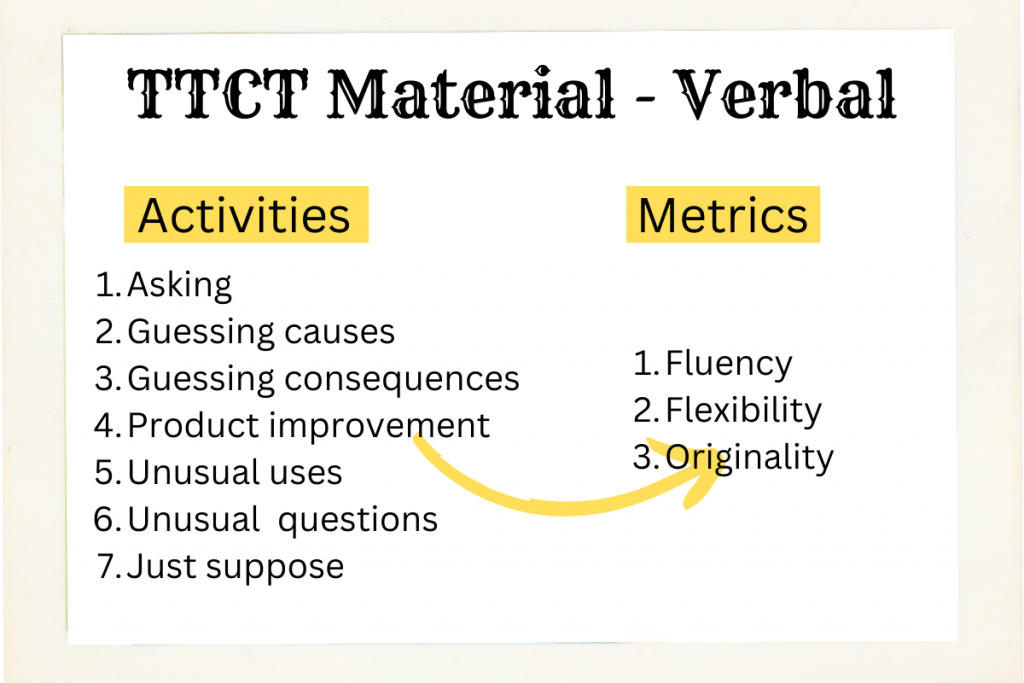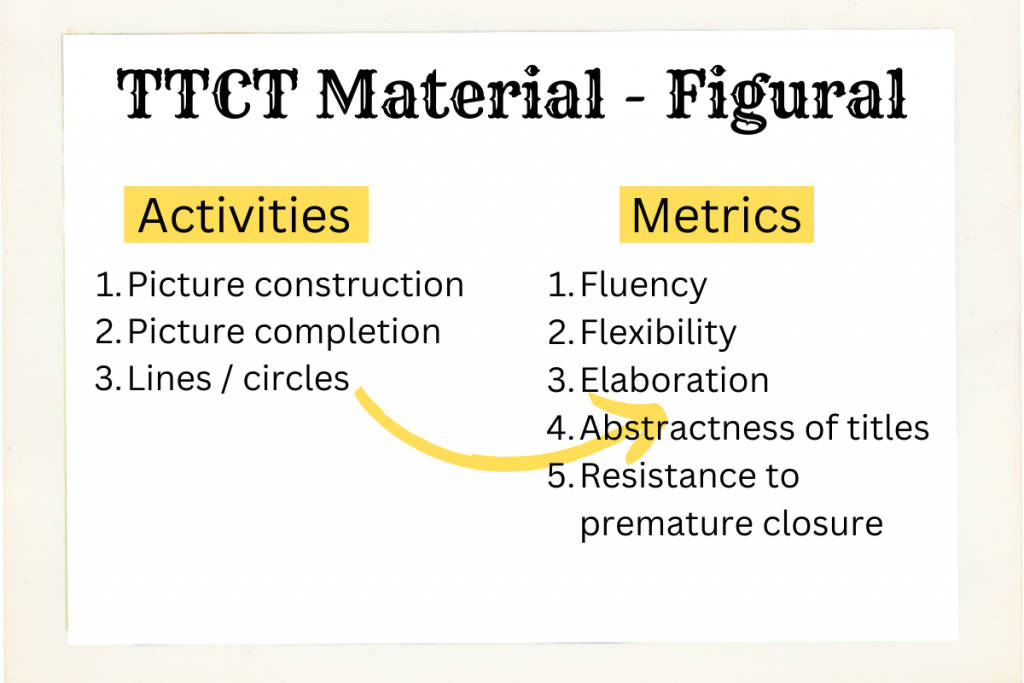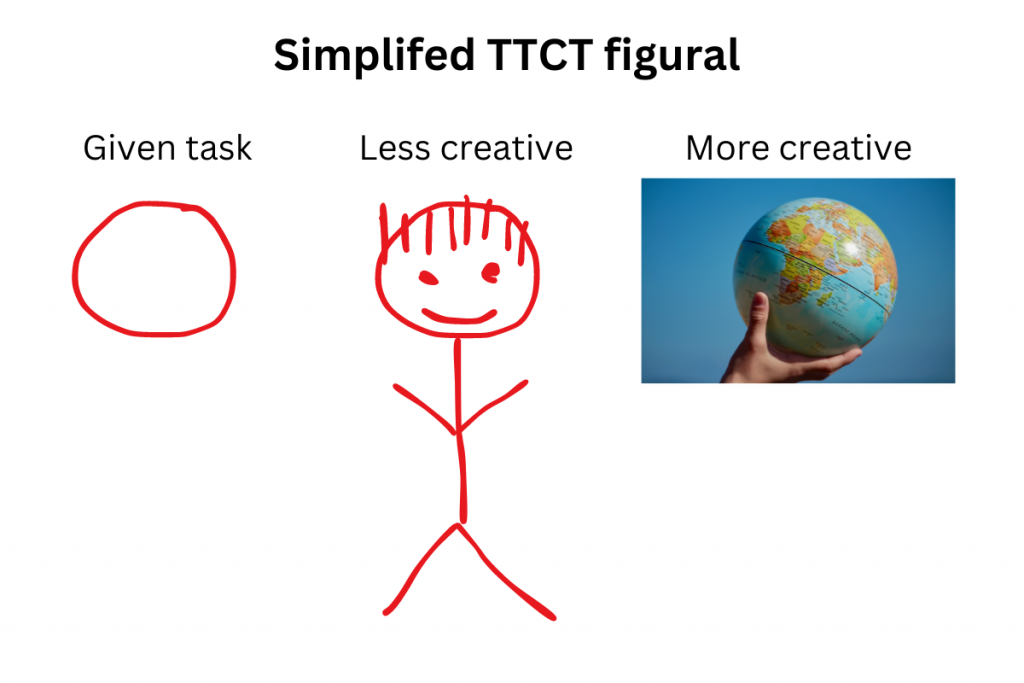Creativity. We all have it, at least to some degree. It is one of the most valuable and fascinating aspects of human nature. According to nerdy definitions, it is the ability to generate ideas or products that are new, useful and have an impact. But how do we measure creativity?
What is the Torrance Test of Creativity?
The Torrance Tests of Creative Thinking (TTCT) is a test of creativity. The TTCT developed and named Dr E. Paul Torrance, a pioneer and leader in the field of creativity research and education. Inspiration came from the work of J.P. Guilford, who proposed a model of human intelligence that included divergent thinking as a key component of creativity. Torrance developed the TTCT to assess divergent thinking and other problem-solving skills essential to creative performance. He also conducted several longitudinal studies to follow students who took the TTCT and found that the test scores predicted their future creative performance better than traditional IQ tests.
In the following sections, we will look at the structure and benefits of the TTCT, explore application possibilities in different contexts, and provide resources for you to begin your own exploration of creative potential. But how do we quantify this remarkable human ability?
The components of the Torrance Tests of Creative Thinking
TTCT comprises of several simple sub tasks or tasks which make up the overall test the test. The test material is comprised of two sections:
- Verbal
- Nonverbal, sometimes called figural section
One or more of these tasks can be used either to measure specific aspects of a person’s creativity or to provide an overall comprehensive overview of person’s creativity.
The TTCT (Torrance Tests) Verbal and Figural do not measure the same creative skills. Fluency and originality are two TTCT components that are assessed in both the Figural and Verbal forms. However, there is little relationship between the scores on the Verbal and Figural measures. Let’s dive in deeper in both test variations.
The Torrance Tests of Creative Thinking TTCT-Verbal
The TTCT-V puts your creative thinking skills to the test through seven activities. Each activity begins with a picture, and you’ll use your imagination to respond in writing. The answer gets assessment based on three key aspects:
- Fluency: How many different ideas can you generate related to the picture?
- Originality: How unique and unusual are your ideas, compared to others?
- Flexibility: Can you come up with a variety of different types of ideas, showcasing different approaches to the picture?
The figure below shows the required outline of activities and scoring for the Torrance Test of Creative Thinking – Verbal. As the name suggests, everything is done verbally and the response is measured.

The Torrance Tests of Creative Thinking – TTCT-Figural
The Torrance Tests of Creative Thinking figural form contains of three main activities:
- Activity 1: Picture construction
- Activity 2: Picture completion (incomplete figures)
- Activity 3: Lines/Circles (repeated figures)
In short, the following visualization shows how each of the above-mentioned activities gets evaluated.

In these activities, participants usually receive sheets of paper which contains abstract or incomplete symbols or shapes. Next, the examinee modifies the symbols/shapes (adds/removes) to create meaning. For example, a candidate gets a shape, such as a circle, and asked to use it to make a drawing in which the given shape is an important component.
Unfortunately, you cannot find the Torrance Test of Creativity online for free. It must be purchased from a publisher. Below is a personal sketch with a purpose to help you understand the core idea.

Are IQ test and Creativity test the same?
The TTCT measures a person’s creativity. On the other hand, the IQ test is used to measure a person’s intelligence. Both parameters (IQ and creativity) are based on different cognitive processes.
Intelligence in the sense of IQ test mainly depends on having the ability of conversion thinking. In simple words, it depends on having skills and knowledge to answer given question.
Creativity, on the other hand, depends primarily on having skills in divergent thinking, which involves thinking of numerous different and non-obvious ways to solve a problem.
Conclusion
In summary, while the TTCT-Figural focuses on visual creativity, the TTCT-Verbal assesses creativity through language and verbal expression. Both tests provide valuable insights into an individual’s creative thinking skills.
The TTCT stood out from other tests of creativity because Torrance not only had a unique definition of creativity, but also designed the test to be enjoyable, simple, and suitable for various groups and cultures.
